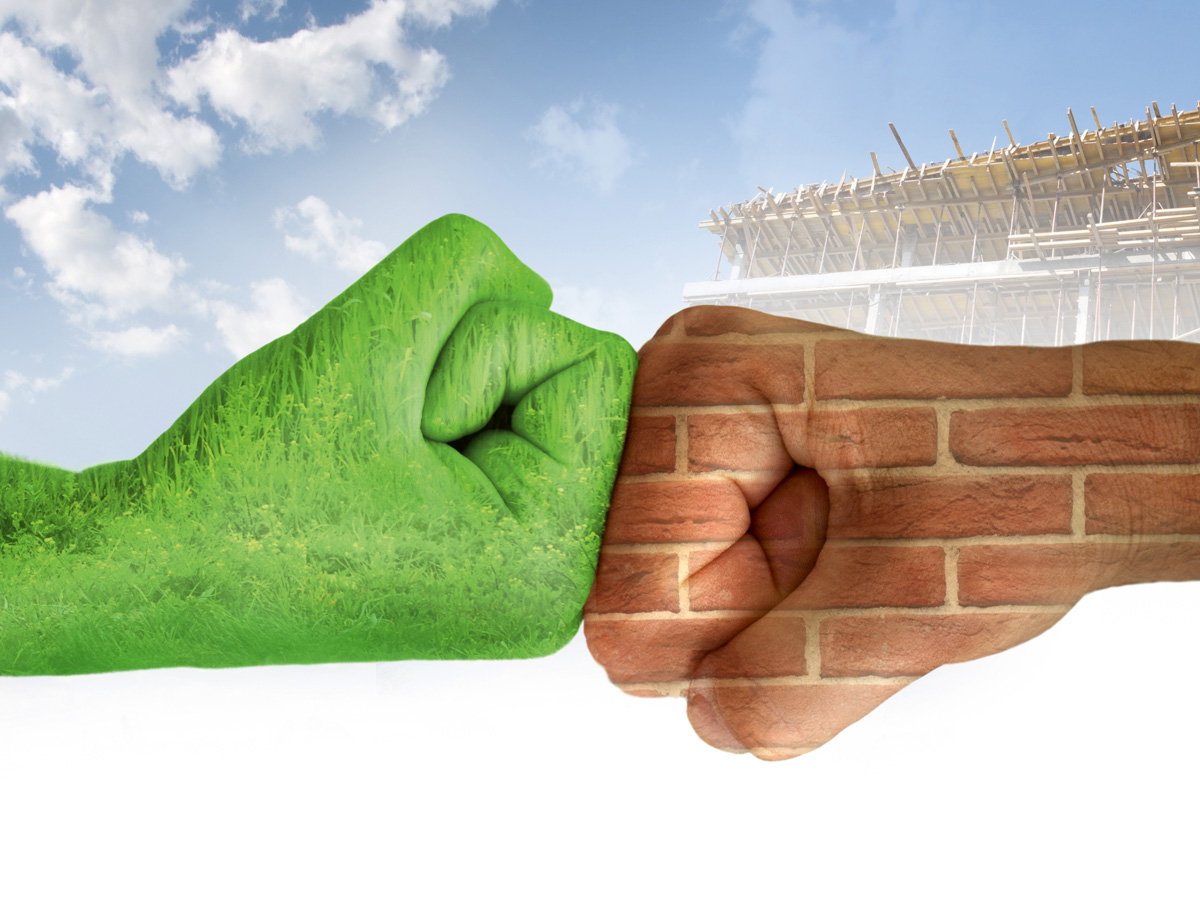ESG should not be limited to equities and bonds, especially as property has such a huge impact on the environment. Mark Dunne reports.
ESG is not a part-time strategy. You cannot claim to be a sustainable investor if you integrate it into one area of your portfolio but invest like it does not exist in others.
Equities have traditionally been the focus for investors pursuing sustainable strategies. Shareholders are using their influence to improve a company’s impact on the environment, management diversity and standards of governance. This approach has spread to debt, where sustainability is typically written into the terms of how the capital will be used. Yet portfolios these days rarely comprise only equity and debt.
To diversify and to generate the regular income needed to pay pensions on time and in full, mature final salary schemes are adding alternatives to their asset mix. Property is proving to be a popular option.
Indeed, almost half (46%) of pension schemes in Europe have interests in domestic bricks and mortar, according to a survey by Mercer, with an average allocation of 7%.
For the past 30 years, property has been an established part of multi-asset portfolios when institutional investors started struggling to achieve their income targets.
“Property, as part of the growing alternative asset class, has constantly increased as an allocation in institutional portfolios since the mid-1990s,” says Christophe Montcerisier, head of real estate debt at BNP Paribas Asset Management.
This is due to returns on investment-grade debt falling and property, although illiquid, offering bond-like features. “Real estate has always been an important part of a diversified portfolio, especially with bond yields where they are and with volatility in public markets,” says Greg Spafford, managing director & senior portfolio manager, real estate at Manulife Investment Management.
It is not just hitting a target return that is important to pension funds. ESG’s influence on their decision-making is strong. Mercer claims that 88% of European schemes integrate sustainability into their portfolios, meaning that houses, offices, shops and warehouses need to comply with this strategy.
“Across the board investors are looking for greener assets,” says Adrian Jones, director of infrastructure debt at Allianz.
Property’s importance in de-carbonising the planet should not be underestimated. Bricks and mortar consumes 40% of the energy generated in the EU, Knight Frank says. Therefore, using less or tapping cleaner power sources could play a huge role in de-carbonising the economy.
“Investors have an environmental policy,” Montcerisier says, “and they want to invest in property in-line with that policy.”
This poses a problem for sustainable-led investors. Can they find enough assets that meet their sustainable policy and still generate the return needed? And if not, what changes can they influence?
Not just hot air
Sustainable property is not just about reducing energy consumption or drawing power from the wind and the sun. Such a narrow focus would leave investors open to allegations of greenwashing. There is more to ESG in property than not using fossil fuels.
Such factors include low water usage and recycling, natural ventilation, waste recycling and a place to re-change electric vehicles. “Architects are working to future proof properties because carbon targets are only going to get tougher,” Jones says.
Construction is also crucial. Using sustainable materials and reducing the distance they travel to the site are important in reducing the wider carbon footprint of the building.
“As we evolve, we need to look at the whole supply chain, the sourcing of raw materials, labour input, governance and social aspects to get a full ESG perspective of what we are investing in,” Spafford says.
Indeed, the social aspects and peoples’ wellbeing must not be overlooked. Properties should be designed with open spaces, rooms big enough for people to live sensibly in and windows that are large enough to allow more natural light into the property.
The growing trend for automation and the internet of things is another element that could help make properties greener and help address wider sustainability issues. Fuelled by faster 5G internet connections, the internet of things will open-up more possibilities to control building environments for optimal efficiency and wellbeing, Zsolt Kohalmi, Pictet Alternative Advisors’ global head of real estate and co-chief executive officer, said in a note.
There will, according to the World Economic Forum, be more than 3.6 billion connected devices used in commercial buildings next year, while it also states that 84% of connected devices have the potential to help achieve the UN’s sustainable development goals.
Making the change
Property is an asset built for the long term and, therefore, long-term impacts should be considered, says Regan Smith, managing director, real estate sustainability at Manulife Investment Management.
“Investors are expecting managers to factor in the future climate risks for those assets and how to make them resilient to those threats, whether it is increasing temperature or flooding,” she adds.
This is all very well for those designing and constructing buildings today, but those who only invest in newbuilds have a small universe from which to shop in, especially in prime locations of major towns and cities. “New constructions only account for 1% of all buildings, so existing buildings need to be taken care of,” Montcerisier says.
Older properties are a problem that need fixing if houses, factories and shops are to play a role in the transition to a low carbon economy. It could also help boost productivity.
“Usually, when investors buy existing properties the end goal is to improve efficiency through maintenance or a capex project,” Montcerisier says. “There are a lot of opportunities to make older properties greener.”
Such opportunities can be found in the core of a property. “Older properties have opportunities to reduce carbon by upgrading the energy and lighting or put in more efficient fans,” Smith says.
Spafford believes there could be benefits to making older buildings more energy efficient. “With the gains you can make on the energy side, there could be an opportunity to invest in old buildings while benefiting from the character and history of the property,” he adds.
There are several actions that could be taken to improve the sustainability and efficiency of an older property. For example, changing light bulbs is a simple investment that can make a difference, while installing solar panels would be more complex.
“99% of the buildings that will be in this country in the next 50 years have already been built,” Jones says. “Refurbishment and improving the efficiency of existing buildings is not glamorous. It is not like opening a windfarm, but, in terms of small incremental steps leading to a big change, it is a way to deliver a positive impact.”
Pictet is an example of an investor that works to make every building it owns as environmentally efficient as possible. “In a multi-use building in the heart of Madrid, for example, we are looking to install reduced flow water taps that decrease water consumption by up to 40%, provide bicycle parking for employees, and put in a circadian lighting system,” Kohalmi said in a note.
Political will is also pushing investors towards greener properties. The Climate Change Act aims to cut greenhouse gas emissions by 80% before 2050. The UK government has set its targets, as have the EU, while municipals in North America have slapped disclosure and carbon emission caps on all man-made structures.
There are various accreditations, including The Building Research Establishment Environmental Assessment Method certification and GRESB, an ESG benchmark for commercial property.
For Montcerisier, tighter regulation is not the main issue. He would like to see more consistency around labels that separate green properties from more traditional buildings.
“The issue is bigger than regulation. It is necessary to harmonise labels,” he says. “Investors need to apply pressure by requesting commonly-recognised labels to ensure that their investment value outbids, in relative terms, the value of non-labelised assets.”
Sustainable returns?
With the cost of any refurbishment added to the investment made in buying a property, should investors be worried that making a property greener will erode the returns?
“Investors do not have to sacrifice return when investing in green properties,” Montcerisier says. “The going in price should be higher. However, rental revenues should also be higher because of the efficient nature of the building and the exit value is expected to be higher as well.” Montcerisier believes that returns for sustainable properties can earn investors a high premium of between 200 and 500 basis points above Euribor, depending on asset class and location.
But Spafford adds that some innovations have a bigger impact on returns than others. “It does not mean sacrificing returns if what you implement is cost effective,” he says. “An investment in solar panels may not pay for itself but changing the lights and windows might.
“I am looking for technology that we can readily implement,” he adds. “The payback on an LED lighting investment, for example, is quick, improves operating costs and builds resilience into our portfolios.”
However, he signals a note of caution that not all innovations are as quick and cost effective. To make solar installations profitable you probably need to own several properties.
The expertise involved in constructing carbon neutral buildings is evolving and, as such, new innovations typically cost more. “The paybacks are long term with much of the carbon reduction achieved through carbon offsets, so it may not be cost effective for some investors,” Spafford says.
Safe as houses
The institutional property market has traditionally been weighted towards warehouses, shops and offices. But this is changing. Residential is becoming an institutional asset class and there is a strong ESG need here.
Allianz is one such player entering the market. It is looking to raise £500m for a residential property fund – Allianz Home Equity Income – which could create a portfolio of up to 1,200 properties when it starts investing early next year.
The fund will buy 95% of a residential property, worth up to £500,000, with the occupier putting up the rest. This high loan-to-value product is for creditworthy people who cannot get a mortgage because they do not have a very large deposit.
The number of privately rented households in this country has more than doubled to 5.5 million from 2.5 million during the past 10 to 15 years, Jones says. “That is largely not on a voluntary basis, but because people cannot get onto the housing ladder,” he adds. “This is the socially responsible investing and ESG angle.”
It means giving tenants certainty of tenure, so they know where they will be living one year to the next and that their re-payments will only rise with inflation.
This shows that investors are seeking to include sustainability in all areas of the property market and that ESG goes beyond renewable energy.
Smith concludes by saying that when it comes to ESG, investors are getting savvier. “People are thinking about the embodied carbon, which is not just the emissions associated with operating the building, but all the emissions associated with the construction materials and manufacturing of the building.”




